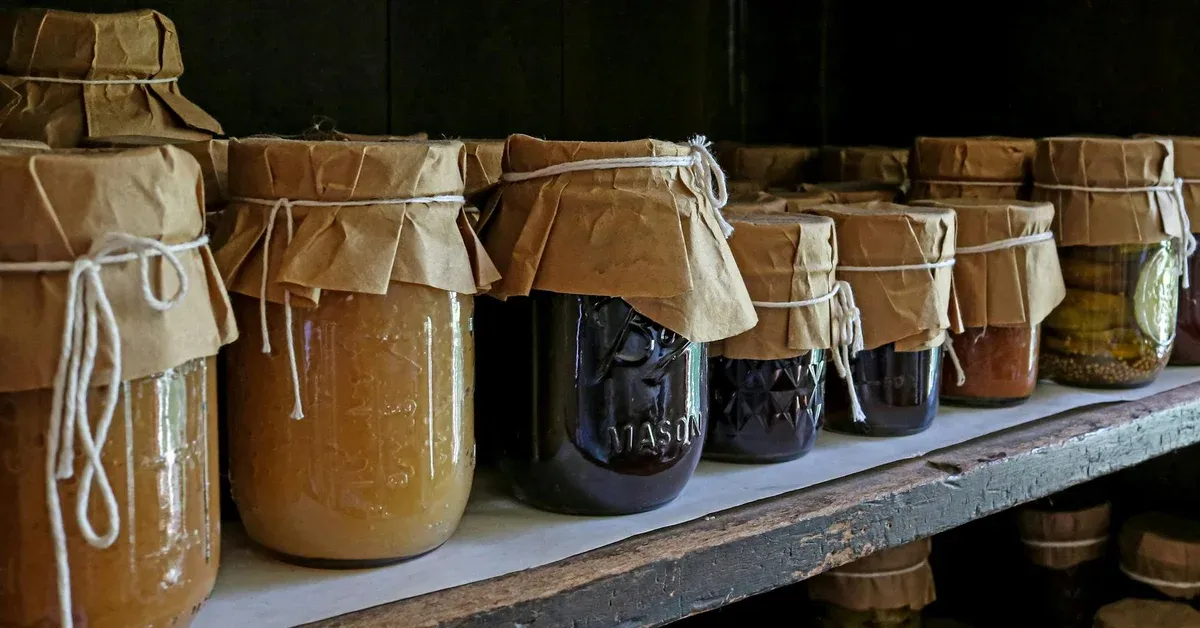
Forget your fancy apps and eco-influencers: the real gurus of zero-waste living aren’t tweeting hacks or unboxing bamboo toothbrushes. They’re your grandmothers. In an era saturated with digital tips for sustainable living, a quiet revolution is bubbling up from an unexpected source: the time-tested zero waste habits of older generations. These weren’t trends for them; they were necessities, forged in times when resourcefulness was a virtue, not a niche lifestyle brand. Turns out, the most authentic and impactful roadmap to a genuinely sustainable future might just be hidden in plain sight, passed down through family lore rather than TikTok algorithms.
The Original Recyclers: When Food Was Too Precious to Waste
Before ‘food waste’ became a modern crisis, it was simply unthinkable. Our grandmas (and often, grandpas too) lived by a creed that every scrap had a purpose, a philosophy born from the lean times of the Great Depression and World War II. They didn’t just ‘reduce’; they actively transformed potential waste, making every item stretch its utility to the absolute limit.
Think about it: those sturdy, ubiquitous ice cream containers weren’t just for dessert. They were treasure troves for storing leftovers, freezing homemade soups, or even organizing sewing supplies. Similarly, glass jars from pasta sauces or pickles weren’t destined for a recycling bin after a single use. They were meticulously washed, often sterilized, and then repurposed for canning homegrown vegetables, preserving homemade jams, or storing dry goods in a truly efficient pantry.
This wasn’t about aesthetics or Instagrammable pantries; it was about pure, unadulterated practicality. Every onion skin became a base for broth, every stale piece of bread transformed into breadcrumbs, every fruit bruise destined for a comforting pie. The modern obsession with single-use plastics and elaborate packaging was an alien concept to these older generations. They understood inherently that to save something from the landfill meant giving it another life, sometimes many lives over. This deep-seated resourcefulness meant there was simply less to throw away, not because they had access to special ‘zero waste products,’ but because they cultivated a mindset of endless utility.
Mending, Making, and Making Do
Beyond the kitchen, the ‘make do and mend’ ethos extended to every corner of the home, transforming textiles and household items. A ripped shirt wasn’t discarded; it was mended, patched, given a unique story that celebrated its longevity. Old bedsheets, long past their prime, found new life as dust rags, or were lovingly cut into neat squares and stored in those ever-present ‘rag jars,’ ready for any household spill or cleaning task.
Fabric scraps from old clothes, worn-out curtains, or discarded sewing projects didn’t see a trash can. Instead, they became beautiful quilts, small pouches, or even intricate doll clothes, embodying a creative spirit that valued repurposing over discarding. This wasn’t just about frugality; it was a profound act of rejecting the throwaway culture that would later define much of the 20th and 21st centuries. Our forebears taught us that true value lay not in newness, but in longevity, adaptability, and the sheer effort of keeping something functional.
This resourceful approach stands in stark contrast to our current fast fashion predicament, where garments are worn a few times before being binned, often due to minor flaws. Older generations invested in quality, cared for what they owned, and patiently repaired it when necessary. This cyclical view of ownership, where items served multiple purposes over a long lifespan, laid the groundwork for today’s sustainable fashion movement, a legacy explored further in From Depression Flour Sacks to Modern Fashion: Zero Waste’s Radical History. It demonstrates that true eco-conscious living isn’t a modern invention, but a rediscovery of necessity-driven ingenuity.
The Radical Simplicity of Mindful Consumption
Perhaps the most profound lesson from older generations wasn’t just how to reuse things, but why they had so little waste to begin with. It was about a deeply ingrained philosophy of mindful consumption – a quiet resistance to the constant pressure to buy more, accumulate more, and perpetually upgrade. They understood instinctively that every thing you buy becomes something you have to store, manage, and eventually, deal with as waste. This wasn’t always a conscious environmental choice, but an intuitive understanding that less stuff meant less fuss, less expense, and a lighter footprint.
This mindset is the true common ground with modern minimalism: the idea that a full life doesn’t require a constantly full shopping cart. Whether it was carefully planning meals to avoid spoilage or simply making do with what was on hand rather than running to the shop for a new pair of something, their default setting was preservation and contentment. Their approach to consumption, outlined in principles often mirrored by reputable sources on zero-waste principles, was an intrinsic part of daily life.
This deep-seated understanding of scarcity, often experienced firsthand, translated into an appreciation for quality over quantity, and a rejection of the superficial allure of fleeting trends. It was a low-waste lifestyle long before the term was invented, rooted in lived experience rather than aspirational aesthetics. They weren’t just saving money; they were enacting a powerful, unconscious boycott of disposable culture.
So, while we scramble for the latest tech solutions to reduce our carbon footprint, perhaps it’s time to hit pause and listen to the wisdom of our elders. The original innovators of a truly sustainable lifestyle, they navigated scarcity with ingenuity and lived with an innate understanding of resource limits. Their practical, often humble, zero waste habits offer a powerful blueprint for our future – not just as nostalgic quirks, but as genuinely effective strategies that bypass the endless cycle of consumption. The revolution, it seems, won’t be digitized; it will be rediscovered in the forgotten wisdom of our grandmas.